Showing 13–24 of 78 results
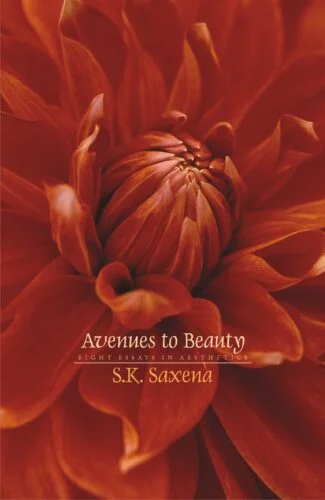
This book has something of value for lovers of both contemporary and traditional thinking on arts because of the diversity of its content Þ Aesthetics Today, The Quest for Key Aesthetic Concepts, Rasa Theory, Music and Silence, and Hindustani Rhythm an Aesthetic Theory and issue.
This book may well be expected to interest one and all, if only because of the diversity of its content and the way it has been presented.
It has something of value for lovers of both contemporary and traditional thinking on the arts. Essays on Aesthetics Today, The Quest for Key Aesthetic Concepts and The Aesthetic Attitude relate explicitly to present-day aesthetics; and the one on Rasa Theory may well be able to provide some new insights to those who are not averse to looking anew at this impressive foray of traditional Indian thinkers into the region of aesthetics.
However, the essay which is most likely to draw and hold readers attention because of the tantalizing appearance, so to say, of its very subject is the one on Music and Silence. Very few aestheticians have written on it so far; and nowhere, except in this book, is the reference all along to Hindustani music. Nor has our rhythm ever been written on in the way it appears in this book, in terms of the following essays: Hindustani Rhythm and Aesthetic Theory and Hindustani Rhythm and an Aesthetical Issue.
As for the essay on Attenboroughs classic film Gandhi, it may well make readers realize, in happy wonderment, how much they failed to mark when they saw it. Indeed, there is no reason why analytic writing on art should not make us ever more sensitive to the numberless creative devices it employs with delightful effect.
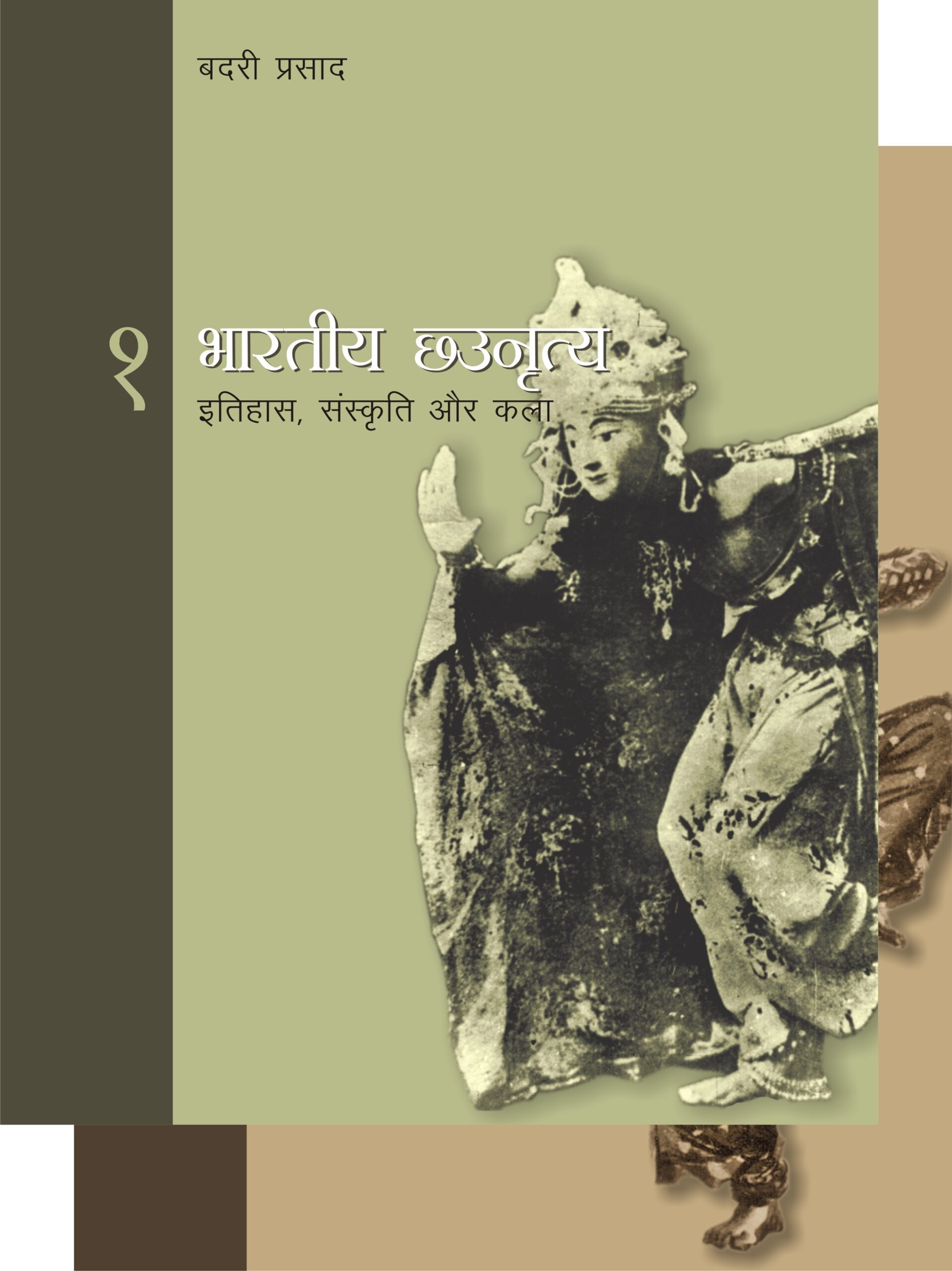
Chhau is a confluence of classical and folk traditions, having its foundation in martial arts. This second part begins with the art of fighting and then proceeds to survey the historicity of Seraikela, Mayurbhanj and Purulia styles along with the performing style, present-day branches, its condition with the information on the artists and institutions that continue to practise this art form.
Chhau dance has an unbroken relation with the essence of Indian culture. This dance form that flourishes in the forest-areas of Jharkhand, Odisha and West Bengal has already attained widespread acclaim, internationally, as an art. By its distinct confluence of the classical and folk traditions, this art form has carved a niche for itself of being counted as the dance of the traditional and classical discipline. It is based on the foundation of martial art techniques. The most striking features are the multi-coloured, splendid, artistic and attractive masks and magnificent headgears that form part of the decoration and costume design. It consists of dance movements called as nritta-karanas as described in Bharata’s Natyashastra and hand gesticulations as found in Nandikeshvara’s Narityashastra, and is also endowed with varied regional movements of folk forms. This dance form depicts movements of day-to-day activities, gaits of animals and birds, and symbolic gestures accompanied by the war-drums and music giving an experience of the sweet fragrance of the regional music forms. The plot is generally drawn from the Ramayana, Mahbaharata, and various other Puranas and poetry. It is thus a combination of a rich tradition of artistic creativity that has naturally attracted the mind of all age-groups at the national and international arena.
The author has collected authentic information by visiting those places where this dance form is traditionally taught and practised. The author has met the teachers of chhau dance, the designers of masks and costumes, and spent time to gather information to be made available in a single place. In the present text, chhau dance has been presented for the first time elaborately with indepth and authentic details. Along with the presentation of the historical and cultural aspects of chhau dance, its performing aspect, content of plot, costumes, physical gesticulation, instruments and instrumentalists, regional styles, the three distinct styles of chhau its history, folk tradition and other details are elaborated in nine sections. The 200 photographs in this edition reiterate the richness of this art with greater authenticity and thus prove to enliven this traditional art form.
Vol. 1 ISBN: 8124606463, 9788124606469
Vol. 2 ISBN: 8124606471, 9788124606476

It explores the art and concept of performance in varied Buddhist traditions Chinese, Japanese, Sri Lankan and others. It explains theatrical performances representing Hinayana, Mahayana and Vajrayana cultures, with extensive endnotes and bibliographical references.
Professor George has ventured into a comparatively unchartered area seeking, as he does, to explore the art and concept of performance in Buddhism more specially in the context of Buddhist meditation and theatre. Spelling out the epistemology of performance in all its different connotations and definitional nuances, his study opens out an astonishingly vast panorama of the Buddhist theatrical practices in Sri Lanka, China, Japan, Nepal, Tibet . . . and goes on to demonstrate how, within this panorama, three kinds of theatrical practice can be identified, each corresponding to one of the three paths open to a Buddhist: the karma path, the Bodhisattva option, and enlightenment, and each representative of one of the three main cultures of Buddhism the Hinayana, Mahayana, Vajrayana. Supported by extensive endnotes and bibliographic references, Dr. Georges book also carries a range of case studies of the art of performance in Buddhism, with definitive examples, among others, of the Sri Lankan Kandy dance and Karma drama, Tibetan Chams and Chod, and Japanese Noh. Buddhism as/in Performance is a commendable piece of painstaking research, presented in a jargonless, compellingly readable style. It is certainly a pre-eminent contribution to drama studies, particularly of Buddhist theatrical practices.
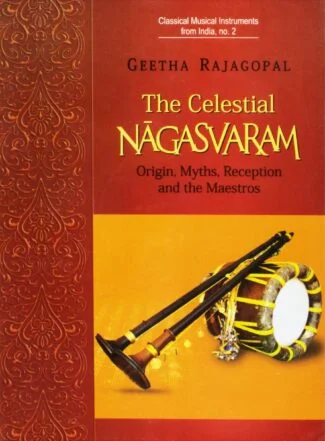
This book makes an in-depth study of the history of evolution, penetration and growth of nagasvaram into the cultural moorings of south India. It makes a systematic study of nagasvaram from different perspectives, its accompanying instruments, its relevance in temple festivals, marriages, the traditions associated, its prevalence and acceptability among south Indian states. It also introduces the all-time great maestros of nagasvaram.
Nagasvaram, worlds loudest non-brass acoustic instrument, is known as mangala vadyam (auspicious instrument), and raja vadyam (king of all instruments). This popular wind-group musical instrument is well known all over the south Indian states, more specifically in Tamil Nadu. Its origin is associated with the Thiruvarur Temple and its legacy continued all through the Pallavas, Colas, Pandyas, Nayakas, and Marathas. It has imprinted its sheen on all the rituals, especially, on the temple festivals and marriages.
This book makes an in-depth study of the history of evolution, penetration and growth of nagasvaram into the cultural moorings of south India over a period of 800 years. It makes a systematic study of nagasvaram (myths associated with it, its making, types, etc.), its accompanying instruments, its relevance in temple festivals, marriages, the traditions associated with nagasvaram, its prevalence and acceptability in Andhra Pradesh, Karnataka and Kerala, in addition to Tamil Nadu where it rules the roost. It widely introduces the great maestros of nagasvaram, for whom it was a nishkama karma.
Kings, temples and mathas were the promoters of this blissful instrument. At present this artform faces severe challenges from the all-pervasive Western musical instruments. The author suggests ways and means of how to maintain the legacy of nagasvaram live, and the need to preserve the rich heritage of our musical tradition for the benefit of our posterity to realize the Supreme Bliss in their life.
This book, rare of its kind, will enthrall those who are keen on instrumental music, especially the faculty, students, and professionals in the field of music, religion and art.

This book makes an in-depth study of the history of evolution, penetration and growth of nagasvaram into the cultural moorings of south India. It makes a systematic study of nagasvaram from different perspectives, its accompanying instruments, its relevance in temple festivals, marriages, the traditions associated, its prevalence and acceptability among south Indian states. It also introduces the all-time great maestros of nagasvaram.
Nagasvaram, worlds loudest non-brass acoustic instrument, is known as mangala vadyam (auspicious instrument), and raja vadyam (king of all instruments). This popular wind-group musical instrument is well known all over the south Indian states, more specifically in Tamil Nadu. Its origin is associated with the Thiruvarur Temple and its legacy continued all through the Pallavas, Colas, Pandyas, Nayakas, and Marathas. It has imprinted its sheen on all the rituals, especially, on the temple festivals and marriages.
This book makes an in-depth study of the history of evolution, penetration and growth of nagasvaram into the cultural moorings of south India over a period of 800 years. It makes a systematic study of nagasvaram (myths associated with it, its making, types, etc.), its accompanying instruments, its relevance in temple festivals, marriages, the traditions associated with nagasvaram, its prevalence and acceptability in Andhra Pradesh, Karnataka and Kerala, in addition to Tamil Nadu where it rules the roost. It widely introduces the great maestros of nagasvaram, for whom it was a nishkama karma.
Kings, temples and mathas were the promoters of this blissful instrument. At present this artform faces severe challenges from the all-pervasive Western musical instruments. The author suggests ways and means of how to maintain the legacy of nagasvaram live, and the need to preserve the rich heritage of our musical tradition for the benefit of our posterity to realize the Supreme Bliss in their life.
This book, rare of its kind, will enthrall those who are keen on instrumental music, especially the faculty, students, and professionals in the field of music, religion and art.
Cinema Through Rasa discusses the important works of the world cinema in the light of Rasa Siddhānta of the Indian classical aesthetics. Rasa Siddhānta was first mentioned in Bharata Muni’s Nāṭyaśāstra – the ancient treatise on dramaturgy. This book catalogues the major cinematic works in the light of Abhinavabhāratī – a tenth-century commentary on the Nāṭyaśāstra by the great Kashmiri Śaivite philosopher Abhinavagupta. Further, it outlines the links between puruṣārtha, the cultural value system of life pursuits in Indian tradition, and aesthetics while citing examples from the works of major directors such as Orson Welles, Luis Buñuel, Ingmar Bergman, Akira Kurosawa, Andrei Tarkovsky, Alfred Hitchcock, Carl Dreyer, Charlie Chaplin, Sergei Eisenstein, Robert Bresson and Satyajit Ray.
Using contemporary scholars’ interpretation of non-dualistic Kashmir Śaivism tradition, Cinema Through Rasa aims to serve as a tribute to Abhinavagupta’s genius, a commentary on important ideas such as rasa, nature of emotions, cinema and beauty along with a tryst with the masterpieces of the world cinema. The meaning of this book is summarized by this verse – na hi rasād r̥te kaścid arthaḥ pravartate – the medium of cinema, though modern, should be seen as resting in the power of rasa without which nothing makes any sense.
This book is a translation of the original Hindi book Abhinava Cinema, which was first published in 2016. Abhinava Cinema was lauded as innovative, path-breaking and a must-read for students of literature and cinema studies by scholars and critics.
Cinema Through Rasa discusses the important works of the world cinema in the light of Rasa Siddhānta of the Indian classical aesthetics. Rasa Siddhānta was first mentioned in Bharata Muni’s Nāṭyaśāstra – the ancient treatise on dramaturgy. This book catalogues the major cinematic works in the light of Abhinavabhāratī – a tenth-century commentary on the Nāṭyaśāstra by the great Kashmiri Śaivite philosopher Abhinavagupta. Further, it outlines the links between puruṣārtha, the cultural value system of life pursuits in Indian tradition, and aesthetics while citing examples from the works of major directors such as Orson Welles, Luis Buñuel, Ingmar Bergman, Akira Kurosawa, Andrei Tarkovsky, Alfred Hitchcock, Carl Dreyer, Charlie Chaplin, Sergei Eisenstein, Robert Bresson and Satyajit Ray.
Using contemporary scholars’ interpretation of non-dualistic Kashmir Śaivism tradition, Cinema Through Rasa aims to serve as a tribute to Abhinavagupta’s genius, a commentary on important ideas such as rasa, nature of emotions, cinema and beauty along with a tryst with the masterpieces of the world cinema. The meaning of this book is summarized by this verse – na hi rasād r̥te kaścid arthaḥ pravartate – the medium of cinema, though modern, should be seen as resting in the power of rasa without which nothing makes any sense.
This book is a translation of the original Hindi book Abhinava Cinema, which was first published in 2016. Abhinava Cinema was lauded as innovative, path-breaking and a must-read for students of literature and cinema studies by scholars and critics.
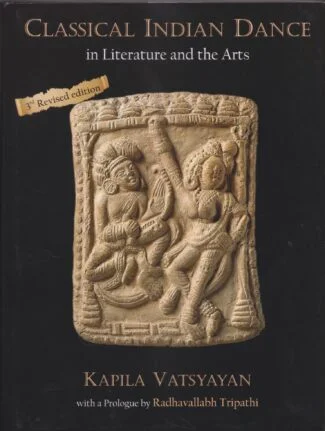
The book vividly presents, analyses and critiques the varied facets of Indian aesthetics, especially the theory and technique of classical Indian dance, while doing a penetrating study of interrelationship that dancing has with literature, sculpture and music. In doing so, the book surveys and analyses the contribution of all great Sanskrit authors, theoreticians, playwrights of ancient and classical India along with the works many Bhāṣā scholars of arts, aesthetics and literature.
This volume is the result of many years of painstaking research in a field, which had been neglected by art historians, and thus presenting an idealistic view of the whole tradition of Indian art and aesthetics. This definitive work on the inherent interrelationship of the Indian arts is a path-breaking endeavour, treading into a domain which no one had explored. For that to happen, the author has delved deep into enormous mass of literature on the subject and has also surveyed the portrayal of dance figures in ancient temples. With Dr Kapila Vatsyayan’s profound knowledge of various dance forms as a performing artist of her own standing and having studied the sculptures and artefacts minutely, the book emerges so scholarly emanating the wisdom and know-how of a persona, endowed with the unique combination of a researcher, an art historian and an aesthetician par excellence.
The book vividly presents, analyses and critiques the varied facets of Indian aesthetics, especially the theory and technique of classical Indian dance, while doing a penetrating study of interrelationship that dancing has with literature, sculpture and music. In doing so, it surveys and analyses the contribution of great Sanskrit authors, theoreticians, playwrights of ancient and classical India such as Bharata, Bhāsa, Kālidāsa, Śūdraka, Bhavabhūti, Abhinavagupta, Jayadeva and many more along with numerous Bhāṣā scholars of arts, aesthetics and literature, covering each and every nook and corner of the Indian subcontinent.
This highly scholarly work should invoke keen enthusiasm among Sanskritists, art historians, dancers and students of varied art forms alike, and should pave the way for ongoing researches on all the topics covered within its scope.

This volume explores the various complex conceptual dimensions of sound: ranging from its mystical and traditionally meta-physical to its present-day developments, from its perceptions in indigenous musical theory to its futuristic applications.
Dhvani (Sound/Nada) is a profound experience that envelopes us from birth to death. Yet it is not easily fathomed. Its description by an accoustic engineer is very different from that of a musician, a linguist, a city planner, or a neurologist. The IGNCA (Indira Gandhi National Centre for the Arts), New Delhi, organized a 2-day International Seminar: 24-25 October 1994, not only to understand the experiential, cross-cultural perceptions of sound, or not just to discourse about its definitional subtleties as are encountered in the ancient texts of the East and the West; but also to bring together its perceptions in tradition, modern accoustics, and even in the ongoing environmental studies. In todays living conditions, the Dhvani-theme is specially crucial for sound has become a major pollutant both in terms of resonances and accoustics. Assembled in this volume are the presentations of the IGNCA seminar, exploring the various complex conceptual dimensions of sound: ranging from its mystical and traditionally metaphysical to its present-day developments, from its perceptions in indigenous musical theory to its futuristic applications. With focus around five thematic areas of the seminar: (a) Sound as the Source of Creation and Sources of Sound, (b) Sound and the Senses, (c) Sound and Space, (d) Sound and Time, and (e) Symbols of Sound and Sonic Designs, the authors open up the possibilities of interaction among different disciplines involved in the study of dhvani-phenomenon.
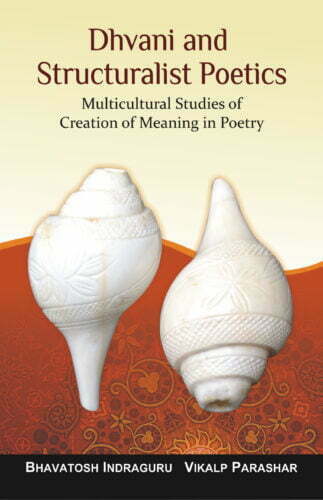
The book is an in-depth study of dhavni, the well established Indian critical system and the Western structural poetics. It also examines the independent universalisation and necessity to explicate words, letters and syllables for the sake of meaning formation.
Dhvani and structuralist poetics emerge as the two primary theoretical frameworks in which the reality of inquisition and propagation of comprehensibility and creativity of the artistry could be well-conceived, exposed and implied. In each of the two systems, the maturity of conception and universality of expression of the content, context and the medium are quite remarkable.
The book is an in-depth study of dhvani, that is, the Indian critical system developed around the eighth century ce, and structuralist poetics the Western critical premise, commencing with Ferdinand de Saussure’s Course in General Linguistics that substantiate an adequate methodology to understand the formation of categories, contents, constructs and mediums as a necessary corollary to an analytical procedure that would bring about transformation. It examines the independent universalisation of sabda, pada, varna, vakya, bhava, vibhava, anubhava, sthayibhava, sancaribhava, alambana and uddipana for the sake of an absolute artistic formation, especially as propounded by Anadavardhana, the progenitor of dhvani system. It then delves deep into the structuralist poetics, following Saussure, Barthes, Jakobson and others, that focuses on the need and necessity to explicate words, letters, syllables and even otherwise an experience so as to create a valid notation, out of each of these, for the sake of totality in the meaning formation.
The study has immense significance owing to the fact that it promotes proper understanding and enjoyment of literature. Moreover, the fact is that Indian and the Western scholarships have not paid much attention to the subject discussed herein. The volume, therefore, will be of an immense interest to scholars and students of poetics and literature in general.
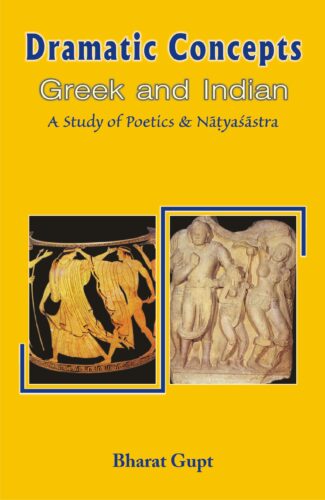
This study offers a fresh approach in comparing ancient Greek and Indian dramatic theories by reconstructing Greek/Indian performances to highlight their similarities and differences. This revaluation will help in shaping of newer modes of performance.
This study offers a fresh approach in comparing ancient Greek and Indian dramatic theories. Instead of treating the Poetics and the Natyashastra as Western and Eastern viewpoints, it places them within the broad framework of ancient Indo-European culture and the art of sacred drama (hieropraxis). It demonstrates that hieropraxis was basically different from post-Renaissance European drama which was entirely secular in content and Realistic in presentation. The Poetics and the Natyashastra on the contrary, belonged to theatres which pleased both gods and men, and which used semiotised gesture, dance, music, and dialogue to create a highly ornate theatrical reality. The book aims at comparing not only the concepts as propounded by Aristotle and Bharata Muni, but also attempts to reconstruct the Greek and Indian performances to highlight their similarities and differences. In view of the increasing constrains imposed on artistic endeavours by commercial pre-occupations in todays world, this stimulating revaluation of the two major classical stage-crafts will go a long way in the discerning and shaping of newer modes of performance. Concepts like anukarana, dharmi, abhinaya, itivritta, mimesis, muthos, melopoiia, katharsis and rasa, etc., as revisited and expounded here, can be seen as means of creating dramatic shows which go beyond message and entertainment to provide sublimer experiences.
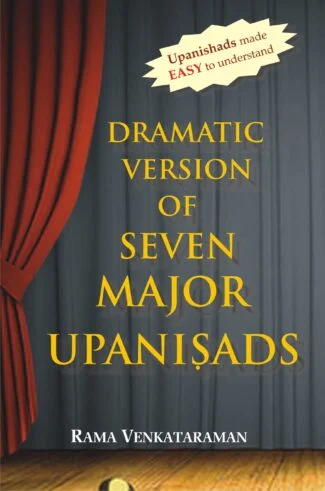
This book an English translation of the Tamil text expounds the wisdom contained in seven of the principal Upanishads in the style of short dramas. English transliteration and meanings of the Sanskrit verses are also included. The language is simple to follow which makes the Upanishads easily understandable by even a layman.
The Upanishads reveal the nature of true vidya: it is the knowledge which leads to the understanding of Brahman which alone is the Reality in the world of appearances. The dramas by Shri Mani Iyer based on the Upanishads render the meaning of the Upanishads in an interesting and captivating manner so that a wider audience can gain from the Upanishadic insight.
This book presents an English translation of Mani Iyers seven Upanishadic dramas, originally in Tamil, and includes English transliteration of the original Sanskrit verses. The dramas pertain to seven of the major Upanishads: Kena, Ishavasya, Prashna, Mundaka, Mandukya, Taittiriya and Katha. With reference to each drama, there is an introduction that reveals the major questions raised by the Upanishad, the manner in which the play proceeds, the nature of the story, its characters, and the conclusion of the play. The translation is simple to follow and possesses a rare clarity.
Because of the simple language and the clear meanings of the Upanishadic verses, this book will be valuable to readers in general, students in particular, and to those interested in knowing what our Upanishads contain and intend to convey.
| × |
|
Agneya-Kona of Bharatavarsha 1 x ₹990.00 |
| × |
|
World as Dream 1 x ₹720.00 |